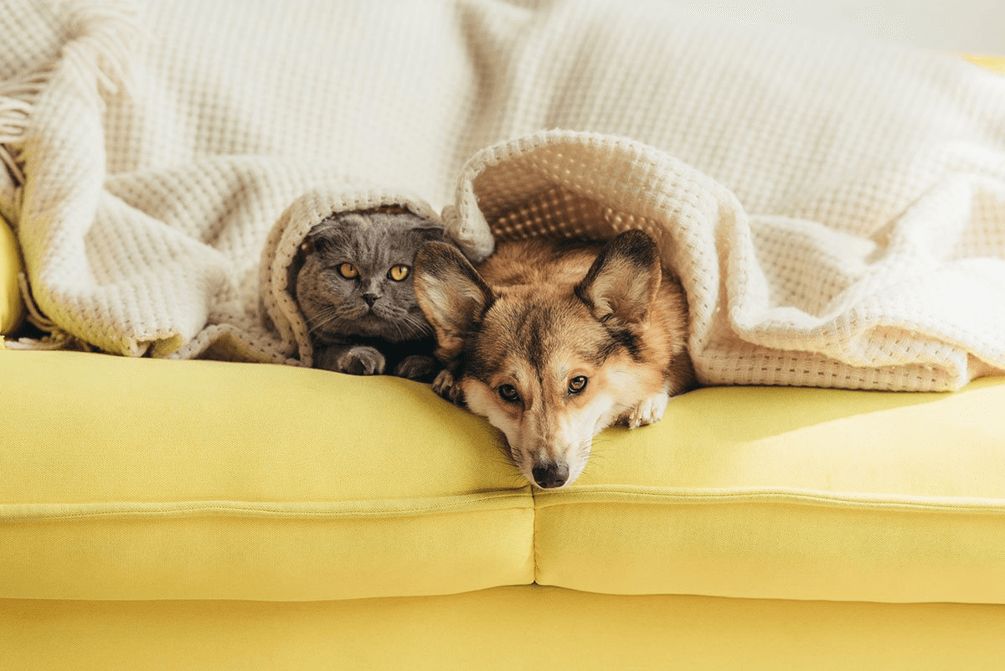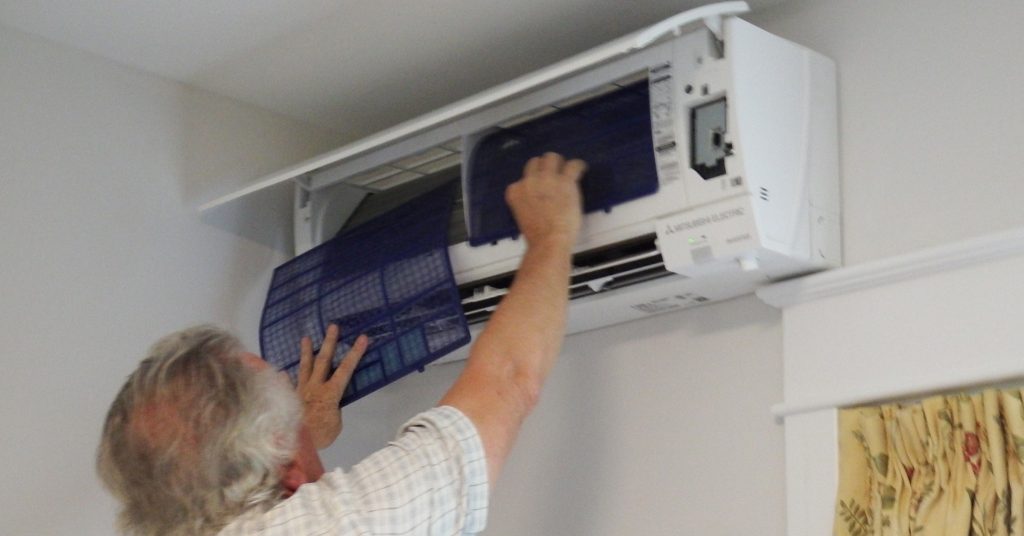-
Facebook
-
Twitter
-
Google+
-
Pinterest
Your home heating and air conditioner takes inside air from your home and replaces it with warm or cool air. If you have pets in your home, the system also picks up all the pet hair and dander that is in your home. As pet hair and dander builds up in your system, it can exacerbate allergies and potentially cause health issues for the people in your home. To keep your HVAC system healthy when you have pets, check out these tips.

-
Facebook
-
Twitter
-
Google+
-
Pinterest
1. Change Filters Regularly
When air runs through your heating and air conditioning system, it passes through a filter which collects the dust, debris, and pet hair in the air. Ideally, you should always change your filter on a regular basis to protect the efficiency of your system and to safeguard the quality of your home’s air.

-
Facebook
-
Twitter
-
Google+
-
Pinterest
Depending on the manufacturer’s recommendations, you may need to change your filter monthly, or every three months. In all cases, if you have pets, you should change your filter more often. Some filters need to be removed, rinsed, and replaced, but other models have disposable filters that you replace as needed. Avoid the expensive hypo-allergenic filters, they are thick and do not allow adequate air flow. Buy the inexpensive filters and replace more often.
2. Vacuum Vents
If the filter doesn’t pick up all the pet hair in your system, the hair gets pushed through the HVAC unit and into the ductwork; generally, this only happens if you don’t change your filter frequently enough. Additionally, as your pets shed, the hair can migrate through your home and build up on the vents.
To avoid pumping pet hair into the air you breathe, vacuum your vents on a regular basis. Also consider removing the vents and vacuuming as much of the ductwork as you can reach.
3. Clean Ductwork as Needed

-
Facebook
-
Twitter
-
Google+
-
Pinterest
Pet hair can even build up deep in the duct work. Consider hiring a professional to check to see if the ducts need to be sealed. Over time, the seams in the ducts can come apart, reducing efficiency which allows pet hair to get into the ducts through the cracks. Alternatively, you may want to invest in a ductless HVAC system so that you don’t have to worry about allergens in your ducts or the heating and cooling inefficiencies related to ductwork.
4. Invest in an Air Purifier
You may want to reinforce your efforts by adding an air purifier to your home. You can invest in a freestanding air purifier or one that connects to your existing HVAC system. In addition to targeting pet hair and dander, most purifiers also remove dust, pollen, and bacteria from your home.
5. Brush and Bathe Pets
In addition to taking steps to reduce the pet hair that builds up in your home heating and air conditioner, brushing your pet is a great place to start. If you have a dog, you should also wash them regularly to remove oil, grime, and other unsavory elements from their skin, which can also get into your home’s air.
Cats, in contrast, don’t need to be bathed. These animals are fastidious groomers, and if you brush them regularly, you shouldn’t need to do anything else.
6. Use a Vacuum with a HEPA Filter
To further safeguard your HVAC, vacuum your home on a regular basis. Generally, homes need to be vacuumed once a week for every person and large animal that lives in the home. For example, if three people and two dogs live in your home, you should ideally vacuum five times per week.
For best results, use a vacuum with a HEPA filter. This filter picks up all the small particles in your home, and just like an HVAC filter, it needs to be changed on a regular basis. Without the right filter, most vacuums blow the dust, dander, and other allergens back into your home.
7. Keep Pets Away from Outdoor Units
Finally, try to keep your pets away from your outdoor condenser. Don’t let cats sleep on top of the unit, and train dogs not to do their business next to the unit. If cats are using the area around the unit as a litter box, put in plants that repel cats or fence off the unit with chicken wire. This helps to prevent animal hair or waste from getting into your HVAC system.
8. Choose Optimal Temps for Pet Health
Beyond keeping your HVAC system healthy, you should also think about your pet’s health. If your AC makes your house too cold, your pet will get uncomfortable. On the flip side, if you turn off the AC when you go to work, your pet may get too hot. The same goes for heating your home, try to always keep in mind your pet’s environment.

-
Facebook
-
Twitter
-
Google+
-
Pinterest
Ideally, you should aim to keep the temperature in your home relatively consistent for your pet. Many people lower the thermostat when they go to work so that the system doesn’t run unnecessarily and waste energy. If you do this, consider setting the thermostat at about 78 degrees to ensure your pet doesn’t get overheated. When you are home, pay attention to how you feel. If you need to put on a sweater because the AC is making your home too cold, your pet is also likely to be cold.
At All Weather Mechanical Inc., we understand that your HVAC system keeps your pets and family comfortable, and we want to ensure you have the best equipment possible for the job. If you need annual HVAC maintenance or repairs or if you want to talk about investing in a new system, please contact us today.
The post How to Keep Your HVAC Healthy When You Have Pets appeared first on All Weather Mechanical Inc..

